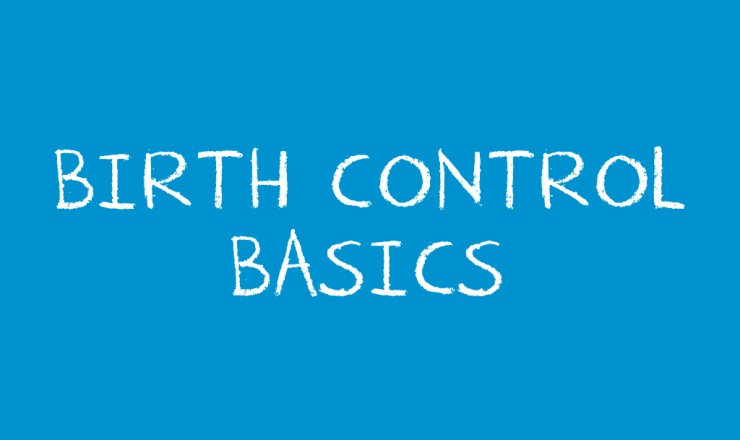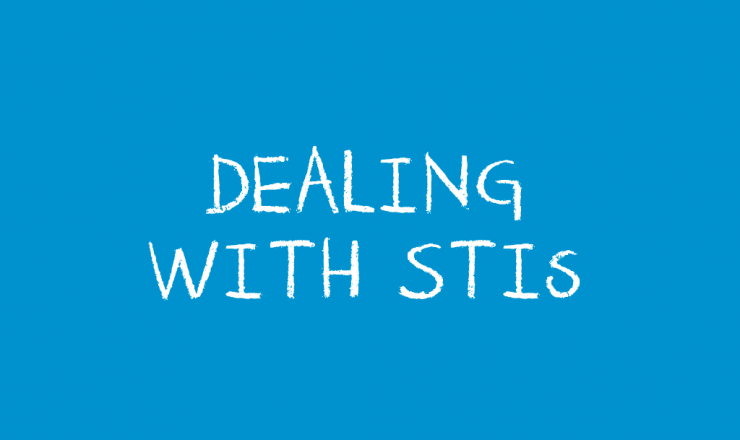Boundaries
What are boundaries?
Boundaries are rules or limits you create based on what feels safe or reasonable when you relate to others or others relate to you. No matter how close you are to others, you are a distinct and separate person with your own expectations, personal rules, and feelings. Your boundaries exist whether you talk about them or not.
Knowing and communicating your limits and expectations helps build safer, stronger relationships. Unclear boundaries or boundaries being crossed can lead to feelings like anger and resentment or to conflicts and challenges in relationships. Sharing your boundaries and checking in with others about theirs are both important.
Boundaries can be hard or soft: they can exist on a continuum of “yes” to “maybe” to “no”. They can be different depending on the situations or environments you’re in, how you’re feeling, or the people you’re with. Some boundaries stay the same, and others change over time.
There are many different kinds of boundaries. Boundaries come up in many different situations and around many topics, like privacy, emotional support, time management, personal space, belongings, or money. This is an info page about personal boundaries. For more about sexual boundaries check out our Consent info page.
Many things can affect how or if you can communicate your boundaries, like power dynamics, sense of safety, gendered expectations, linguistic or cultural teachings, personal style, etc. Sometimes communicating boundaries may not feel like a choice or may not be possible. If someone has a lot of authority or control over you and is not receptive to hearing your boundaries, communicating boundaries could be dangerous or have negative consequences. If communicating a boundary feels unsafe or impossible, please reach out to someone you trust for support.
Identifying Boundaries
Individual preferences, cultural expectations, and past experiences guide your comfort levels with different people and in different environments. To identify your boundaries, you have to figure out how you feel about different situations. Feelings can come up as body sensations, thoughts, or just “knowing” something is true for you. It can help to just pay attention to what you are feeling even if you don’t understand what it means. Here are some examples of clues your feelings and body might give you about a boundary:
- Does your stomach churn when someone leans in for a hug?
- Do you feel excited when you’re asked out on a date?
- Does your heart flutter when a crush DMs you?
- Do you feel resentful when a loved one forgets a special occasion?
- Does your throat tighten when someone asks a personal question?
Figuring out our boundaries can be challenging. Sorting out what’s going on for us can take some time. That’s okay. Stay curious.
- Sometimes you may have a mix of emotions at the same time.
- You may have been taught to put the needs of others ahead of your own, to ignore or devalue your boundaries.
- Sometimes you realize you have a boundary when it’s been affirmed for the first time.
- Sometimes you don’t know where your boundaries are until they’ve been crossed.
- You may need the support of a friend, a therapist, or other trusted supports to unpack your feelings and understand your boundaries.
Communicating Your Boundaries
We all have different boundaries. You can’t know other people’s, and they can’t know yours, unless they’re communicated. Sharing your boundaries is an act of kindness and shows that you’re invested in the relationship. This can be especially important with people you interact with regularly.
Asserting your boundaries might feel scary or vulnerable. And, when you do it, you’re more likely to get your needs met and people are more likely to trust you to meet their needs. This can build more intimacy and connection in your relationships.
Here are some communication styles for talking about boundaries. You may recognize your style in one or a mix of styles, or in different styles depending on the situation you’re in or who you’re with.
- Assertive Communication: You communicate your needs clearly and firmly, state observations without judgment or labels, and ask for what you need while taking others’ needs into consideration.
- Passive Communication: You want to avoid confrontation, so you may not say much or may not question ideas or decisions that are presented, to try your best not to rock the boat.
- Aggressive Communication: You may attempt to manipulate people to do what you want using guilt, intimidation, and/or control.
- Passive-Aggressive Communication: You avoid direct confrontation (passive), but try to get your needs met through manipulation (aggressive).
While you can’t control how someone will respond, considering the outcome you are seeking when you state a boundary may help you decide which communication style might work best in your situation and with the person/people involved.
I-statements can be a way to share and own our experiences. They usually follow a formula: I feel _____ when _____. To communicate a boundary, you might add: I need _____ to feel ____. Here’s an example: “I feel anxious when I don’t know that you’re running late. I need you to call me and give me a heads up to feel like my time is being respected.”
When a Boundary Has Been Crossed or Challenged
If you think a boundary has been crossed, you can ask yourself what expectations or rules have been broken or why you disagree with someone else’s rules or expectations. You might find this framework helpful to identify what’s happening and choose how to respond:
- Your boundary was respected (response: appreciate/validate): “Thanks for knocking and waiting for a reply before coming in.”
- Your boundary was challenged (response: negotiate): “I’m not sure this is okay for me, can we slow down and figure it out together?” “I think I’m reaching a limit.”
- Your boundary was crossed (response: reassert/reestablish): “____ crosses a line for me. Moving forward, I need ___”
- Your boundary was violated (response: repair or protect): “What happened really wasn’t okay. I need ____ to move on from this.” Or, “I need to end this conversation and take care of myself.”
These tips might be helpful when stating a boundary or talking to someone who has crossed or challenged your boundary:
- Ground yourself. The more you can be present, the more you are likely to feel in control of your emotions and the conversation. There are many ways to ground yourself, like fidgets, meditation, a walk, talking with a friend, etc. Use strategies that work for you.
- Be kind to yourself. You might have feelings like fear, anxiety, guilt or shame, or judgmental or worried thoughts. Take some time to take care of your feelings. Remember, you’re allowed to feel however you feel. Your boundaries are still important.
- Focus on impact. What happened? What did you think, feel? How did it affect you? What was the impact of their actions?
- Explore your boundary. What do you need to have affirmed, changed, or clarified? Is your boundary negotiable, or firm? What are the soft or negotiable pieces of your boundary? What are the hard limits?
- Boundaries aren’t punishments. Setting boundaries is about mutual respect and should never be about punishment or revenge.
- Assess risk. How safe do you feel in this relationship? Do you feel that your boundary will be heard and respected?
- Safety planning. If you are concerned your boundary will not be heard or respected you may want to think about how to take care of yourself if that happens, like letting someone know when and where you are going to have the conversation, checking in with a support person or therapist afterwards, having someone support you while you state your boundary, or planning some self care ahead of time.
- State your boundary calmly and firmly. Once you know your boundary, tell the person. Don’t apologize, over-explain, or justify it.
- Only take responsibility for yourself and your choices. You can’t control how they respond. Holding your boundaries with compassion for others is a skill. It can take time to learn how to do it without putting those others’ feelings, needs, or reactions to hearing your boundaries ahead of your own feelings and needs.
- You may need to restate your boundary. Some people might need a gentle reminder about your boundary. Others may need a more serious check-in if they continue to cross it.
- Protect your boundaries. If you’ve communicated a boundary and someone keeps crossing it, it’s okay to act to protect your boundary. You can choose to take a break from spending time with that person, or end the relationship altogether. If it’s a relationship you want to grow, you may want to tell the person they’ve crossed your boundary and what steps you’re taking to maintain the relationship while protecting your boundaries.
- Accept the outcome. Most people will want to respect your boundaries, but you can’t control if they can’t or won’t. Even if you don’t get what you need or want, you’ll get information about how to move forward.
- Practice. Setting boundaries takes time, patience and practice.
Boundaries and Compromise
Sometimes you may choose to collaborate or compromise with others around your boundaries, especially if your boundaries are flexible and you value the relationships involved. Here are some tips for these situations:
- Consider relationship context. How important is it for the quality of your relationship to have your boundaries affirmed? What outcome do you want from the conversation?
- Acknowledge intentions. If your boundary is flexible, you could ask what is going on for the other person. What were they feeling? What were their intentions? This may or may not change how you feel about the situation or the person.
- You can ask for what you need while validating their needs. You may still decide to uphold your original boundary. Sometimes people’s boundaries clash, and that can be hard. It can also be an opportunity for problem solving and negotiation. What would an ideal result be for each of you?
Accepting Others’ Boundaries
If we believe sharing our boundaries with others is an act of kindness, so is someone letting you know what their boundaries are, or that you’ve crossed them. This may be an opportunity to build trust and deepen your relationship. Everyone makes mistakes: what’s important is how you own them and move forward.
A lot of difficult feelings can still come up. You may feel uncomfortable, rejected, ashamed, anxious, guilty, or defensive. You may need to ask for some time to sit with your feelings before you respond. This can be an opportunity to get to know yourself better and practice self-compassion. As you reflect on or listen to the boundary being named, you can use many of the same tips as for identifying your own boundaries. When you’re ready, find a way to apologize that honours yourself and the relationship. Here are some tips:
- Express remorse. Use a clear statement like “I’m sorry I did ____”, or “I apologize for ____”
- Acknowledge the impact of your action(s). Show empathy: “I can imagine you felt ____, and ____ when I did ____” or “It must have hurt when I said ____”.
- Accept responsibility. Use I-statements: “I was wrong to do ____, ____ wouldn’t have happened if I made a different decision”, or “I regret that I didn’t give you ____ when you needed it, I should have gotten it to you before ____”
- Offer to improve or make amends. Saying how you plan to change your behaviour or make amends can help to restore trust.
- Accept the outcome. Sometimes when you cross a boundary, relationships change or end, it takes a long time to work through the feelings involved, or the harm caused can’t be repaired.
- Get support. It can help to talk about your experience with someone you trust before or after apologizing.
Resources:
For more information on this topic, check out some of our other fact sheets in the Relationships Series, such as Consent and Dealing With Rejection.
Some other resources that were useful in making this fact sheet include:
- YouTube: I’m having a Feeling and it’s RESENTMENT by mighty feels
- Psych Central: Why Personal Boundaries are Important and How to Set Them by Leah Campbell
- com: Search or surf the “Boundaries” tag for Q&A blog posts on asserting, reviewing, and negotiating boundaries in all kinds of different situations.
For a downloadable resource on this topic, please visit Planned Parenthood Toronto Factsheet Database.
If you have questions about this topic, feel free to contact one of our peer educators. [Link]
Last Edited: September 2021






